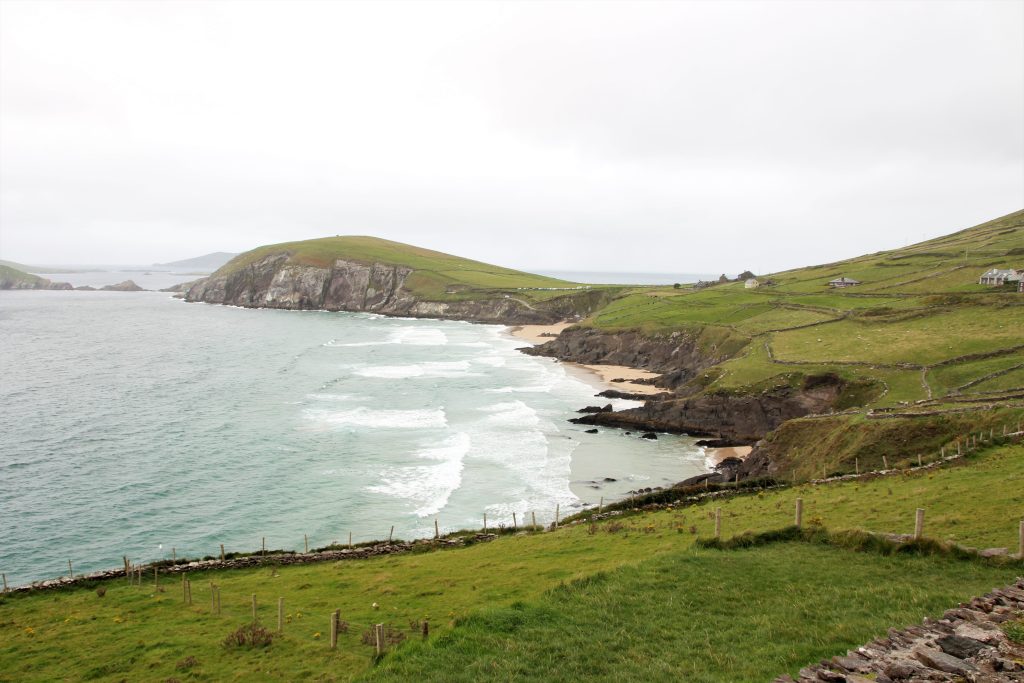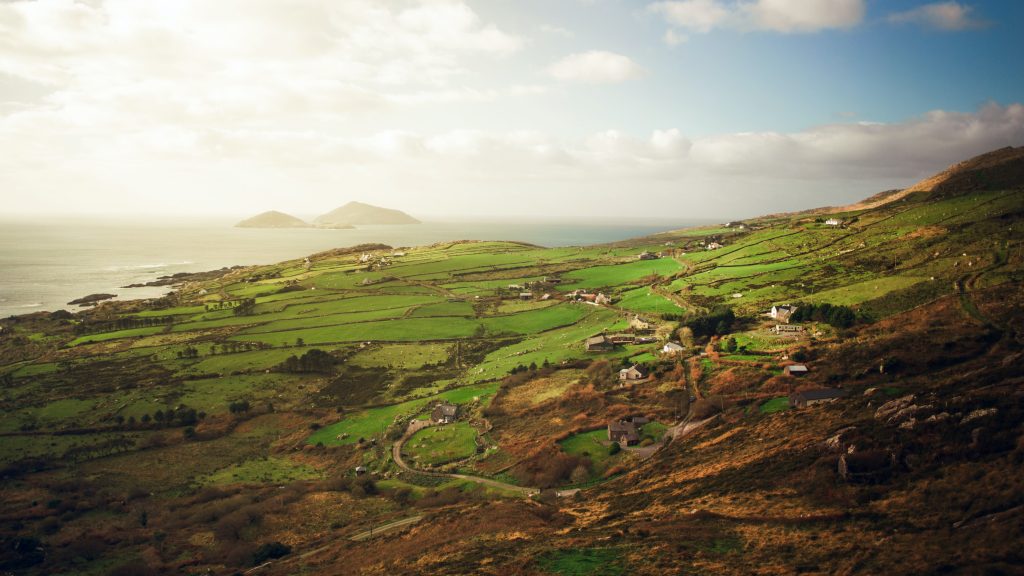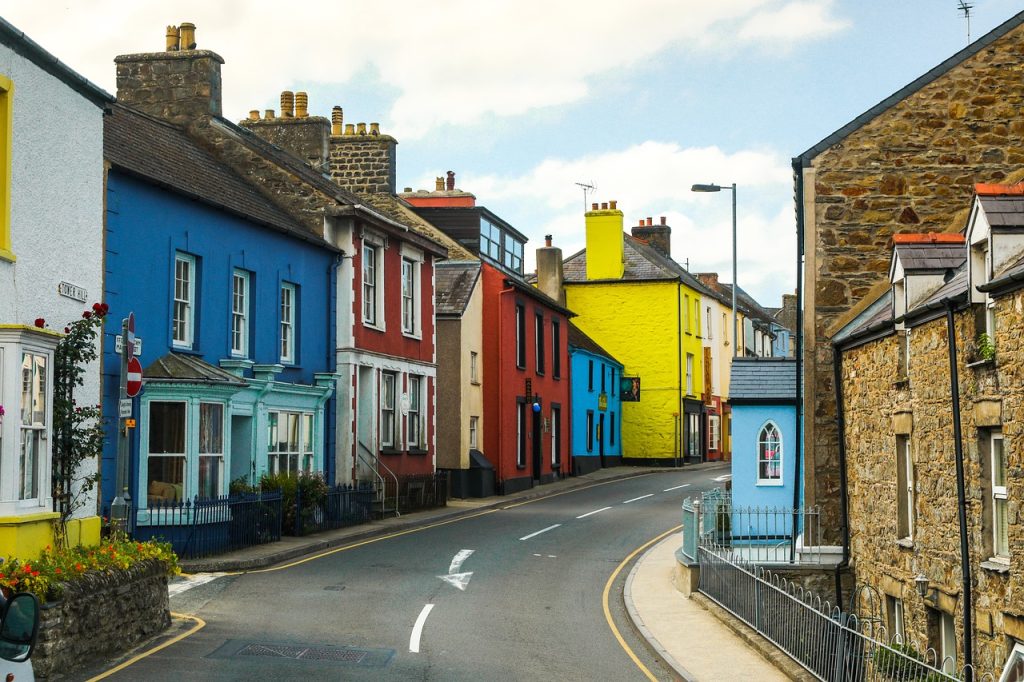The Dingle Way, tucked away in Ireland’s wild and beautiful landscapes, is a monument to the island’s extraordinary beauty and rich cultural history. The Dingle Peninsula, a location famed for its beautiful coastal vistas, rolling green hills, and attractive villages, is home to this alluring long-distance Trail.

Photo by Hanna May on Unsplash
The Dingle Way, one of Ireland’s most well-known walking trails, provides explorers and nature lovers an unrivaled opportunity to experience the Emerald Isle’s enchantment fully. The Dingle Way promises a fantastic journey encapsulating Ireland’s culture. If you are looking for a soul-stirring trek through historic sites, an insight into Gaelic traditions, or simply a chance to lose yourself in the peace of unspoiled nature, you should consider the Dingle Way, Ireland.
It could be that you are far from Ireland or need to know more about dingle ways to get there. Let us consider all that you need to know before setting out to explore this beauty.
Brief History
The Dingle Way’s history may be traced back through centuries of human interaction with the alluring landscapes of the Dingle Peninsula. It is a tale that is intertwined with the history of Ireland. The Trail’s precise beginnings are still obscure in the mists of time, and its historical significance is intricately tied to the area’s cultural heritage and the footsteps of previous generations.
The Dingle Way progressively became a recognized trail as long-distance hiking became more common in the contemporary era, providing a route for tourists and residents to experience the peninsula’s natural marvels and historical relics. In the latter half of the 20th century, as initiatives to protect and highlight the area’s distinctive beauty gained traction, the Dingle Way became a known walking route.
The Dingle Way passes by some of Ireland’s most impressive archaeological sites. The most noticeable buildings along the way are standing stones, ogham stones, and several beehive huts.
The Dingle Way is a living example of how nature, culture, and human activity coexist today. Routes meander past antiquated ruin sites, past artifacts from a bygone era, and next to bustling towns that yet carry the sounds of ancient generations. The development of the Trai reflects the more general trend of eco-tourism and outdoor adventure, demonstrating the enduring relationship between people and their environment.
On the Dingle Way, hikers and walkers follow in the footsteps of history as they follow a path that captures the best of Ireland’s past and present. Trail’s continued appeal demonstrates its capacity to teleport modern adventurers into a world where time-honored customs and the grandeur of nature collide, allowing everyone who travels along it to participate in its always-changing story.
Description of the Sight
A sensory symphony is presented with each stride along The Dingle Way, a mesmerizing tapestry woven into the fabric of Ireland’s southwest coast. An expedition unlike any other is promised by this 179-kilometer Trail, a beautiful fusion of nature’s most significant components and human history.

Photo by Nis Nedel on Unsplash
One is immediately intrigued by the striking contrasts the Dingle Way displays when looking at it. The rough shoreline, which the Atlantic Ocean’s foamy waves kiss, serves as a sturdy sentinel against the ebb and flow of time. Stone cliffs stand boldly, their faces worn by ages of wind and sea, while secret coves beckon moments of reflection.
Inland, the scenery changes into a lush paradise. The view of rolling hills covered in the distinctively green vegetation of Ireland seems to go on forever. Walls that are hundreds of years old, a reminder of the labor and legacy of earlier generations, adorn these undulating plains.
As the trail winds through adorable communities, more of its charm is revealed. With thatched roofs and beautiful flowers, decorations radiate a simple charm that calls to mind earlier times. Village entices visitors to stop and take part in the conviviality with the warmth of its taverns and the friendliness of its residents.
But the constantly changing interplay of light makes the Dingle Way a magical sight. A spell is created by the sun’s gentle touch, transforming the scenery from delicate pastels to vibrant, blazing hues, drawing wanderers further into its embrace. Tribute to the breathtaking splendor of Ireland’s wild heart, the Dingle Way creates a lasting impression with each passing second.
Ways to Get There
Travel by Air
Flying into Ireland is the most frequent method of accessing the Dingle Way. Airport (Farranfore) and Shannon Airport are the closest international airports. Closer to the Dingle Peninsula, Kerry Airport is incredibly convenient. Getting to the trailhead from the airport is very easy.
Car Rentage
Renting a car gives you the freedom to get to the trailhead and explore the Dingle Peninsula. Airports and cities in Ireland have many automobile rental companies. It gives you access to various stretches of the Dingle Way and lets you explore the charming communities along the way.
Public transportation:
Major Irish cities have buses and trains that travel to locations close to the Dingle Peninsula. You can go to Tralee or Killarney by train or bus, where you can change to a local bus that will bring you closer to the Dingle Way.
Guided Tours
A guided tour is an additional choice, particularly if you want a hassle-free excursion. Tour companies provide planned excursions to the Dingle Way that may include lodging, transportation, and guided treks.
Ferry:
You might consider taking a ferry to get to the Dingle Peninsula while touring other regions of Ireland. Different and beautiful route to your destination is made possible by the ferries between numerous coastal towns and islands.
Details on hiking Tour du Mont Blanc
When to Go: Weather and Season
The spring, which includes the months of April to June, is undoubtedly the ideal time to climb the Dingle Way. The rugged terrain of the Dingle Peninsula comes to life during this time, providing a colorful backdrop for your hiking journey.
Hikers on the Dingle Way can benefit from several benefits in the spring. Hiking conditions are favorable due to the milder weather, temperate temperatures, and longer daylight hours. Every step you take will be a visual treat as the landscape is flooded with blossoming wildflowers, creating a kaleidoscope of hues to your journey.
The trails are typically less busy than the busiest summer months, creating a more serene and immersive experience. Along the trip, you’ll have the chance to get up close and personal with the breathtaking coastal views, historic archaeological sites, and sleepy villages.
Although spring weather can be erratic, difficulties can be minimized with careful planning and the right equipment. In conclusion, picking spring for your Dingle Way hike entails setting off on an enthralling trip amid the majesty of nature and enjoying the ideal harmony of weather, scenery, and isolation.
Accommodation
Numerous lodging alternatives are available to greet weary travelers along the intriguing Dingle Way, ensuring a relaxing and delightful journey through the magnificent surroundings of the Dingle Peninsula. The path offers various locations to rest and refuel, whether looking for traditional Irish cottages’ rustic beauty or warm inns’ contemporary conveniences.

The Dingle Way is known for its charming bed & breakfasts, which provide a warm and individualized touch. Family-run hotels offer cozy rooms frequently decorated with flowers and a filling Irish breakfast to start your day. With this choice, you can interact with people and learn about the local way of life.
Farm stays offer a unique chance to engage with the land and its keepers for those seeking a more in-depth experience. They can participate in agricultural activities, savor farm-to-table cuisine, and take in the peace of country living.
Charming guesthouses and inns with cutting-edge conveniences and classic architecture may be found in the villages and towns that dot the Trail. Lodgings provide a variety of room kinds to accommodate various spending limits and tastes.
Hostels are a practical choice for travelers on a tight budget and backpackers because they frequently provide common areas and dormitories. These are fantastic locations to meet and chat with other hikers.
Camping is another choice for the more daring as you cross the breathtaking terrain. The Dingle Way has designated campsites to set up your tent and get close to nature.
It’s vital to remember that making reservations in advance, especially during the busiest summer months, is a good idea to guarantee your stay. Hikers, whether seeking authenticity, comfort, or cost, can find a perfect spot to rest before beginning the excellent Dingle Way treks, thanks to the range of hotel alternatives.
Food and Water
The eating options along the path feature traditional Irish cuisine and contemporary gastronomy, reflecting the Dingle Peninsula’s rich culinary past.
Hearty meals and regional specialties can be enjoyed at the hospitable restaurants scattered throughout the charming villages and towns along the route. Locations are frequently more than just restaurants; they are also centers of culture and community where visitors may interact with neighbors and other hikers while satiating their appetites.
Traditional Irish pubs offer a welcoming and friendly setting to eat traditional pub fare like fish and chips, substantial stews, and handcrafted pies. You may also choose from a fine array of regional beers, stouts, and whiskeys in many of these places to fully experience Ireland’s thriving pub scene.
While you can get most of what you need around the Trail, it is also important to travel with dry foods that you can keep and eat later. If you have never tried Irish foods, you should look forward to trying them. Still, you should also carry foods your body system is familiar with. Also, don’t forget water is an essential aspect of the hike, so carry a lot of water and a bottle to refill as you hike.
Tips to know when hiking
- Carry enough cash for shopping because some smaller settlements along the route may not have many card payment alternatives.
- Know the local emergency numbers and the closest medical facilities in an emergency.
- Remember to go with your camera so you can take pictures for memory
- When getting food and water, respect regional customs and traditions. Request authorization before entering private property to use water supplies.
- Use Leave No Trace principles, pack out any waste, stay on designated trails, and do not harm plants or animals to reduce your environmental influence.
- Observe Your Pace, and There is always another day to trek the Trail, so be careful not to overdo it. Begin at a comfortable pace and stop when necessary.
Potential Dangers
1. Cliff Edges: Along the shoreline, the Trail occasionally skirts the edge of a cliff. Cautious and keep away from edges that may be unstable. The Dingle Way offers beautiful views along cliffs, but these areas can also present serious risks. It may be challenging to navigate narrow or steep paths. A slip-up or loss of balance could cause catastrophic accidents or falls. Hikers should proceed with caution, keep on pathways that have been marked, and stay away from the margins..
2. Remote and Isolated Locations: The Dingle Way travels through remote, thinly populated locales, challenging reaching help in an emergency. Communication can be difficult when cell phone coverage is patchy or nonexistent. When there are injuries, getting immediate medical attention may take longer. Hiking in a group or letting someone know your desired path can increase security.
3. Wildlife Encounters: Although coming into contact with animals while hiking might be exciting, treating them with care is crucial. Wildlife, including livestock, birds, and possibly more giant creatures like deer, are drawn to the Dingle Way by its natural beauty. Hikers should keep their distance from any animals they come across and refrain from startling or provoking them. There’s a chance of entering domesticated animals in some areas, such as sheep or cattle, which can be territorially aggressive. Maintaining your composure and gradually backing away to avoid unnecessary conflicts is essential.
Conclusion
The Dingle Way is particularly enjoyable since it can accommodate a variety of tastes and skills. Trail caters to everyone, guaranteeing a rewarding excursion, whether you are an experienced hiker looking for a challenge or a casual walker wanting peaceful strolls. The welcoming nature of the local communities along the way adds to the journey’s richness by revealing the area’s rich cultural past and encouraging a sense of community.
After finishing the Dingle Way, the sense of achievement is immense because every step reveals breathtaking sights and profoundly peaceful moments. Landscape and human interaction on the Trail combine to create a tapestry of memories that stay in the mind long after the journey.
Ultimately, the Dingle Way is more than simply a hike; it’s an alluring journey that encourages visitors to appreciate the wonders of nature while creating closer ties to Ireland’s soul-stirring landscapes and the kind-hearted people who call this country home. Dingle Way is a living example of the happiness and pleasure of embracing nature’s wonders, whether seeking solitude, friendship, or a chance to revitalize your spirit.

